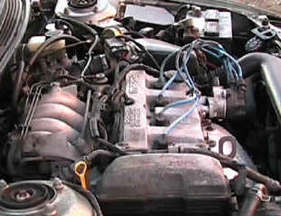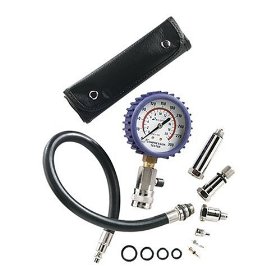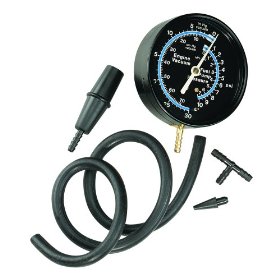Rough Running Engines
 Rough running engines are often caused by basic system problems. Often Diy car mechanics start searching for answers in the automobiles high tech areas.
Rough running engines are often caused by basic system problems. Often Diy car mechanics start searching for answers in the automobiles high tech areas.
In many cases, the car problem is located in the most basic principles of engine operation.
Not all engine performance problems are directly related to electronic control systems, oxygen sensors, fuel injectors or other cutting edge electronics.
Therefore a do it yourself mechanic still needs to understand engine testing procedures. These basic tests are an important part of modern engine troubleshooting.
To follow I will discuss two common engine testing procedures that should be considered when trying to diagnose lack of power or rough running engines. Many people in the car repair industry would consider these next tests a car mechanics best friend.
Lack of power | Rough running engines
 Internal combustion engines rely on the compression of the air fuel mixture to maximize the power produced.
Internal combustion engines rely on the compression of the air fuel mixture to maximize the power produced.
The upward movement of the piston on the compression stroke will compress the air fuel mixture within this sealed chamber making it easier to ignite and also burn completely.
An engine with low compression will not run correctly, cannot be tuned properly and will have lack of power. A compression tester gauge is used to check the cylinders ability to seal against high pressures.
This is an easy to use inexpensive tool that comes with complete instructions on how to use it. Before conducting a compression test, it is recommended to disable the ignition and also the fuel system.
You should also prop open the throttle plates into a wide open position to allow the most amount of air to enter the cylinder during the test as possible. This handy diagnostic tool will come in a kit with all the adapters needed to perform the procedure on most engines both foreign and domestic.
Engine vacuum testing lack of power
 In a perfect world each cylinder of an internal combustion engine will produce the same amount of vacuum.
In a perfect world each cylinder of an internal combustion engine will produce the same amount of vacuum.
This is why the vacuum gauge readings should be steady and give a reading of at least 18 to 20 inches of mercury you can check your auto repair manual for your exact specification.
If one or more cylinders produce less vacuum than the others the needle of the vacuum gauge tester will fluctuate. When performing vacuum tests for rough running engines, the intensity of the fluctuation of the needle on the vacuum gauge indicates the severity of the mechanical engine problem.
If the reading on the vacuum gauge fluctuates between 7 and 20 you should then look at the rhythm of the needle. If the needle stays at 20 inches of mercury, but drops to 7 and then quickly rises we know that reading is probably caused by a malfunction in one cylinder.
If the vacuum tester reads low all the time like a reading of 15 inches or less and has no fluctuation. This would be an indication of a clogged exhaust system.
This will cause a lack of power and is most likely stemming from a catalytic converter problem. You can see an example of how I used these tests and a few more to diagnose a rough engine idle on a Mazda 626.

